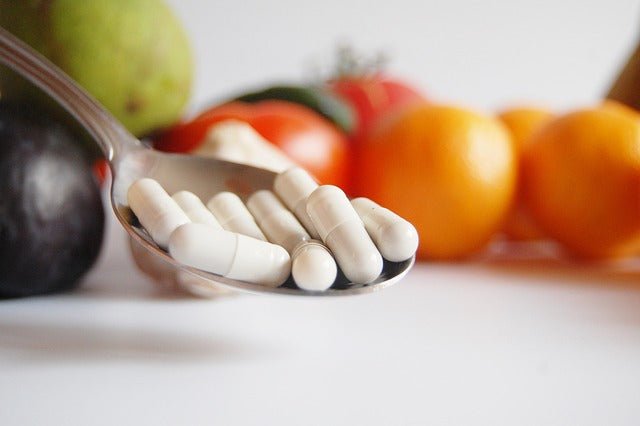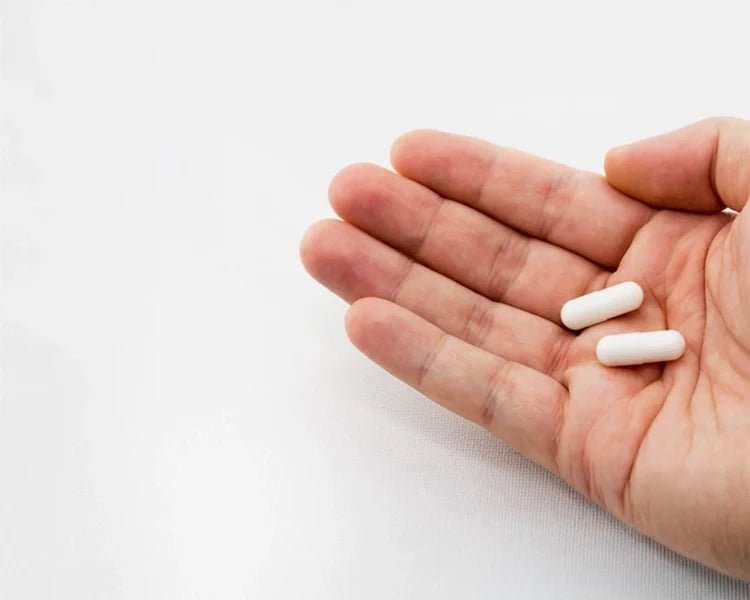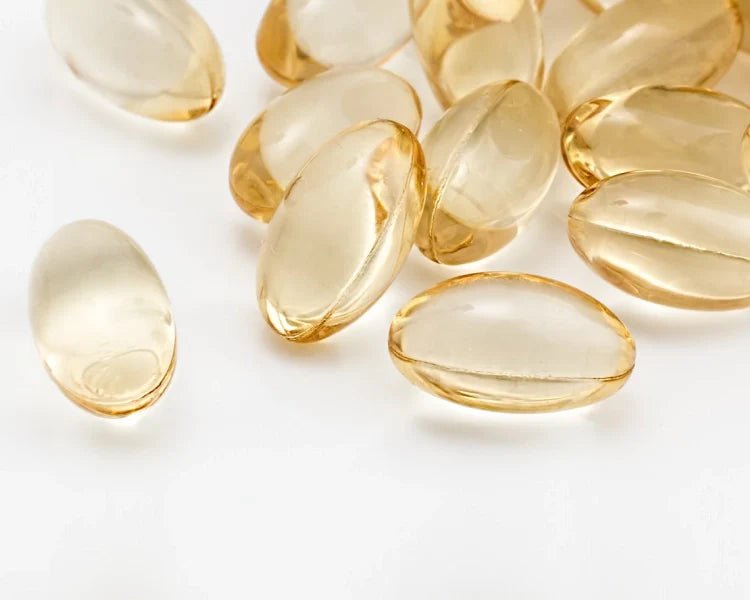Education
Are French fries and chips a health hazard?
Fried foods, especially those based on carbohydrate products, are an integral part of our diet. However, more and more research indicates that the frying process may produce acrylamide - a chemical compound that may pose a risk to human health. In this article, we will explore the health effects of acrylamide, the products in which it is present, and present medical sources that confirm this risk. Organizations such as the International Agency for Research on Cancer (IARC) and the World Health Organization (WHO) have classified acrylamide as a carcinogen. What is acrylamide? Acrylamide is a chemical compound produced in the process of thermal processing of carbohydrate products, such as potatoes, French fries, bread, as well as coffee and some cereal products. It is produced by the reaction of amino acids with sugars in the presence of high temperature. High concentrations of acrylamide can be found in burnt or heavily browned foods. Where is acrylamide found? Primarily in carbohydrate products subjected to high temperatures during frying or baking. Examples of products include: French fries, chips, potato pancakes, bread, cookies, roasted coffee. Acrylamide in research Scientific research and assessments by health institutions clearly emphasize the potential danger associated with acrylamide. If possible, it is worth limiting the consumption of heavily burnt or roasted foods to minimize the risk of exposure to this carcinogenic substance. Deep frying carbohydrate products, although providing culinary pleasure, leads to the formation of acrylamide, a substance harmful to human health. To reduce the risk, it is worth choosing less burnt and more delicately prepared foods. Marta Wcześniak Medical Sources and Research: EFSA (European Food Safety Authority). (2015). EFSA statement on the presence of acrylamide in food. Tareke, E., Rydberg, P., Karlsson, P., Eriksson, S., & Törnqvist, M. (2002). Acrylamide: a cooking carcinogen? National Cancer Institute. (2020). Acrylamide and Cancer Risk. National Toxicology Program. (2021). Report on Carcinogens, 15th Edition.
Learn morePainkillers and health
Year by year, sales statistics of painkillers increase, according to many of them, in recent years by up to 250%! Pain is an inherent part of the human experience, and pain medications are often the first choice for relieving symptoms. However, their excessive and regular use may have adverse consequences for human health. It is worth understanding the different types of painkillers, their potential side effects and the causes of pain in order to approach the topic responsibly. Types of Painkillers: NSAIDs (non-steroidal anti-inflammatory drugs): Examples are ibuprofen, diclofenac. They have anti-inflammatory and analgesic effects by inhibiting enzymes responsible for inflammation. They may cause gastrointestinal problems. SIDE EFFECTS: May cause gastrointestinal problems, ulceration, bleeding. Paracetamol: Has an analgesic and antipyretic effect. Its excess can damage the liver. SIDE EFFECTS: Too high a dose or given for too long may damage the liver. Opioids: Strong painkillers such as morphine or oxycodone. They can lead to addiction and have a depressing effect on the respiratory system. SIDE EFFECTS: Risk of addiction, respiratory depression, drowsiness. DON'T IGNORE THE PAIN! Pain can be a signal from the body that something is wrong. Pain symptoms in the head, joints, spine or abdomen may be caused by various reasons, such as injuries, infections, chronic diseases or improper habits. Ignoring pain can worsen your condition and delay proper diagnosis. DO YOU EXPERIENCE PAIN REGULARLY? Consult a doctor - pain is intense, frequent or persistent, it is worth consulting a doctor to rule out serious health problems. ATTENTION! Don't overuse painkillers: Use medications only as directed by your doctor or as directed on the package. Adopt healthy habits - a healthy diet, regular physical activity and avoiding stress can help reduce pain; in many cases, recurrent weakness, nausea or headaches result from DEHYDRATION or lack of adequate food during the day. Remember that a healthy approach to pain involves recognizing its cause, not just masking the symptoms with painkillers. When in doubt, it is always a good idea to consult your doctor to ensure that you receive appropriate medical care. Mata Wcześniak Bibliography: American Heart Association. (2020). Nonsteroidal Anti-Inflammatory Drugs (NSAIDs). National Institute on Drug Abuse. (2020). Opioids. Mayo Clinic. (2021). Pain Medications: Prescription pain relievers, OTC pain relievers and topical products. Harvard Health Publishing. (2019). The hazards of too much acetaminophen. Mayo Clinic. (2021). Pain Management: Pain basics. Harvard Health Publishing. (2020). When Pain Relievers Cause More Headaches.
Learn moreSleep disorders and their impact on the course and control of diabetes
Diabetes is a very common disease nowadays. It is called a civilization disease or a non-communicable epidemic of the 21st century. About 3 million people suffer from the disease in Poland, and approximately 440 million in the world, which translates into 1.6 million deaths annually due to it. The disease increases mortality but also deteriorates the quality of life. Diabetes that is improperly treated and poorly controlled causes very serious complications, mainly cardiac ones - more frequent heart attacks, strokes, atherosclerosis of arterial vessels, and, as a consequence of these changes, an increase in the number of lower limb amputations, cases of kidney failure, and diabetic retinopathy. Peripheral polyneuropathy is a very painful symptom, affecting mainly the feet and significantly worsening the patient's quality of life. Currently, an individual approach to a patient with diabetes is emphasized, because each case is different. Each patient struggles with diabetes at different stages and degrees of advancement, uses different antidiabetic drugs or insulin therapy, has a different lifestyle, work pattern, ability to perform physical activity or follow an appropriate diet, which is so important in diabetes. Despite increasingly better treatment methods, modern drugs and insulins, new insulin pumps and continuous glucose monitoring (CGM) systems, good diabetes control and avoiding hyper- or hypoglycemia are still influenced by many elements of the patient's daily life. Regularity, repetition, consistency of eating, working and resting times, avoiding excessive stress, worrying, living in a hurry, as well as the ability to get good and healthy sleep are very important. The latest diabetes recommendations of the PTD emphasize the role of sleep, its duration and quality on the course of diabetes. Sleep disorders affect diabetes in two ways. On the one hand, they worsen its balance, causing morning hyperglycemia, increased insulin resistance, and certain neurological disorders that persist during the day regarding concentration, memory, and emotion. On the other hand, diabetes, especially insulin therapy or traditional, older drugs such as sulfonylurea derivatives, generate glycemic disturbances at night and impair the quality of sleep. Sleep disorders in patients with diabetes and their adverse impact on health parameters The journal Diabetologia conducted a meta-analysis on the incidence of sleep disorders in type 2 diabetes and their impact on factors such as glycemic control, micro and macrovascular complications, depression, mortality and quality of life. The authors, based on the available literature in the PubMed database, asked the extent to which the treatment of sleep disorders in patients with type 2 diabetes can improve the mentioned health factors. The review included both observational and experimental studies. The results showed that insomnia (39%), obstructive sleep apnea (55-86%), and restless legs syndrome (8-45%) occurred more often than in the general population without diabetes. Moreover, it has been shown that sleep disorders have a significantly negative impact on glycemic control and increase the percentage of glycated hemoglobin HbA1c. The reason for the increase in glycemia after a bad night's sleep is believed to be an increase in the amount of stress hormones, mainly cortisol, which causes metabolic disorders, insulin resistance, slower metabolism, difficulty maintaining optimal body weight, and additional snacking at night or in the morning. Repeated sleepless nights increase your cardiovascular risk. It has been proven that people who sleep little have higher levels of CRP (acute phase protein), which causes a greater risk of inflammation, weakened immunity, a greater risk of obesity, diabetes, hypertension, depression, and cancer. Already the first sleepless night causes memory and concentration disorders, weakened reflexes and the ability to react, anticipate, make decisions and various emotional disorders. Each additional one increases the risk and intensity of the above-mentioned disorders. Such a person may have impaired driving skills, limited assessment of the consequences of actions and reduced foresight, which may contribute to an increased risk of road accidents or accidents at work. The body returns to full balance only after three consecutive nights of sleep. Treating sleep disorders may therefore play an important role in preventing the progression of diabetes. Conventional therapies such as weight loss, education, and cognitive behavioral therapy appear to be effective in improving sleep and health outcomes in patients with diabetes. Sleeping medications should only be used in more severe cases and for short periods of time. For this purpose, you can use herbal medicines that have a relaxing and sleep-inducing effect, as well as melatonin. In conclusion, it can be stated that because the treatment of sleep disorders can prevent deterioration of diabetes control, sleep disorders should be recognized and treated in patients with diabetes in order to ultimately improve health and quality of life. Diabetes and drug therapy as factors worsening sleep quality A diabetic patient using insulin therapy, especially intensive 3-4 injections a day, and also treated with an insulin pump or older generation drugs, such as sulfonylurea derivatives, is more exposed to fluctuations in glycemia at night, which may manifest as: Hyperglycemia, i.e. too high blood glucose level >180 mg, with symptoms of difficulty falling asleep, more frequent urination - nocturia and large amounts of urine excreted (polyuria), Hypoglycemia, i.e. too low glycemia level <70 mg/dl. It may cause waking up at night or waking up with heavy sweats, deterioration of sleep quality, problems with waking up, feeling tired, dull, and irritable during the day. To avoid these problems, you should choose the appropriate meal for dinner, especially the amount of carbohydrates in the meal, and adjust the appropriate dose of insulin depending on the glycemia before the meal, e.g. around 6:00 p.m., and basal insulin, usually administered around 10:00 p.m. Currently, with advanced devices for measuring CGM (Continuous glucose monitoring system), new insulin pumps with a hybrid system and closed loop, significant nocturnal hypo- or hyperglycemia is becoming less common, and patients have a better quality of life and avoid dangerous complications of diabetes. . To ensure comfortable sleep, remember the basic rules, such as the appropriate temperature in the bedroom (about 18 degrees Celsius), airing the room, properly selecting a sleeping pillow and mattress, and using headbands or earplugs. In the evening, it is important to turn off multimedia and avoid intense exercise late at night. It is worth remembering about fixed sleep times and avoiding shift work at night. To sum up, detecting and treating sleep disorders is not usually part of standard patient care in a diabetes office, which is often due to the time limit of such a visit, but drawing attention to this problem in the doctor's office and ensuring the patient's good sleep contributes significantly to improving diabetes control. , and sometimes to prevent it and reduce the risk of other diseases and health problems mentioned in this article. Krzysztof Chabros Diabetologist specialist Literature: Urszula Cieślik-Guerra, Sleep disorders as a risk factor for type 2 diabetes, " Fam Med Prim Care Rev11.3 (2009), pp. 574-576. Clinical recommendations for the management of patients with diabetes 2022. Position of the Polish Diabetes Association. Current Topics in Diabetes, 2022;2 (1) p. 26.
Learn moreMedicine or dietary supplement? What to choose?
Mr. Magister, I would like some magnesium "in the form of a MEDICINE". A conversation at the pharmacy window often begins with this phrase. Then the patient begins a long analysis of the composition and packaging to be 100% sure that there is no inscription "dietary supplement" on it. The pharmacist often avoids talking about this topic, but should still be prepared to talk to the patient. The problem of distinguishing and comparing drugs and dietary supplements is quite difficult. Both product categories are placed on adjacent stands and have similar, and often the same, composition. So what is the mystery and why do patients try so hard to buy a drug and not a dietary supplement? Let's start with individual definitions. A medicinal product is a substance or mixture of substances presented as having properties for the prevention or treatment of diseases occurring in humans or animals or administered for the purpose of making a diagnosis or for the purpose of restoring, improving or modifying the physiological functions of the body through pharmacological, immunological or metabolic action. (Pharmaceutical Law of September 6, 2001, Chapter 1 Art.2 Point 32.) The definition contained in the Act clearly states that a drug (medicinal product) prevents, cures, improves or modifies the physiological functions of the body. Whereas: Dietary supplement - a food intended to supplement a normal diet, being a concentrated source of vitamins or minerals or other substances having a nutritional or other physiological effect, single or combined, placed on the market in a form enabling dosing, in the form of: capsules, tablets, dragees and in other similar forms, sachets with powder, ampoules with liquid, dropper bottles and other similar forms of liquids and powders intended for consumption in small, measured unit quantities, excluding products having the properties of a medicinal product within the meaning of the provisions of pharmaceutical law. (UST AWA of August 25, 2006 on food and nutrition safety, SECTION I, Art. 3 point 3, ppk39) According to this definition, a dietary supplement is a food that is intended to supplement the normal diet with vitamins, minerals and "other" substances. At first glance you can see the difference, but is it really? Looking at the last part of the definition: excluding products with the properties of a medicinal product within the meaning of pharmaceutical law, we reach the point where it is impossible to distinguish a dietary supplement from a drug. What is the difference between a medicinal product containing 2000 IU of vitamin D3 in the form of cholecalciferol and a dietary supplement containing exactly the same in the same form, but in capsules? There are several differences between a drug and a dietary supplement, but neither side achieves a clear competitive advantage. The first issue concerns legal aspects. Various institutions register both product groups. Drug registration is handled by URL (Drug Registration Office). It does this on the basis of many tests and certificates. However, the Chief Pharmaceutical Inspector is responsible for marketing authorization in the country. Dietary supplements are also officially registered by the Chief Sanitary Inspector (GIS) on the basis of an application submitted by the entrepreneur. Therefore, it is not the law that supplements are not subject to control, because the GIS may refuse to register or, in case of uncertainty, may ask for an opinion from the URL. The registration procedure for dietary supplements is shorter and easier to carry out, which is why many drug manufacturers register their next products in this category. The second thing is the doses of individual ingredients. Based on the dose definitions, substances in a drug have a curative or preventive effect, while in a supplement they have a nutritional effect. No less surprising is the fact of the existence of vitamin C - a drug in doses of 200 and 500 mg in the presence of the same vitamin - a supplement in doses of 1000 and 2000 mg. Questions arise about the body's actual needs, the dose that produces a therapeutic or nutritional effect, and the dose that is too high to be safe. Another aspect concerns the origin of the ingredients contained in the products. Due to high standardization requirements and the purity of substances, synthetic substances obtained through chemical reactions are often used in medicinal products. Dietary supplements often contain ingredients of natural origin, which seems to be a healthier solution and more adapted to the living organism. They also contain plant ingredients and their extracts. Sometimes dietary supplements contain plant ingredients that are not found in our climate or in Europe, but which have a proven positive effect on health and fitness. Further differences concern promotion and advertising. No elements of the packaging, names or advertising of supplements may suggest medicinal properties. Each package must also have the description "DIETARY SUPPLEMENT". Every day we are attacked by advertisements for medicines and supplements, so much so that it is difficult to know what and whether it is worth buying to support our health. We consume large amounts of medicines and dietary supplements every day. This is due to the fact that the availability of supplements is very high, advertising in the media is intense, and society is taught to respond to changes in its health by purchasing new preparations. Supplements are used to improve the condition of hair, nails, skin, eyes, joints, etc. We supplement vitamins, minerals and herbs using multi-ingredient products. Therefore, it is important to know the exact composition of a given preparation. There is a high probability that several preparations will contain the same ingredients and by taking a whole range of products we will provide too high doses of the mentioned vitamins or minerals. It is also worth remembering that the most important source of supplementation is food, i.e. what we eat. So how should you approach the use of supplements to make it safe? Let us remember that choosing a drug as a safe form will not always meet the nutritional and health needs of the body. On the other hand, not all supplement manufacturers meet the quality standards of their products. Taking this summary into account, you should follow a few rules to achieve the appropriate nutritional effect while maintaining safety. Here are the rules worth following Let's choose high-end supplements - there are several leading companies on the market. Some of them can be found on our website. Companies with extensive experience, certified products and production standards such as GMP, ISO, etc. The most advantageous offers are provided by companies that grow medicinal herbs themselves and produce vitamin and mineral ingredients instead of mass purchases from suppliers. Let's use only those substances that we need - it's best to discuss the selection of ingredients with a specialist. Do not use supplements recommended by third parties. The appropriate selection of supplements in oncological diseases and post-oncological therapies is extremely important. Many ingredients have the ability to stimulate excessive cell growth. If possible, use single-component or multi-component preparations. We will then avoid the possibility of duplicating doses of the same substance. Let's ask a specialist when and how to take a given product. Often, the absorption of the substance and the effect of the entire preparation depend on the time of day or the meal we take. In light of these assumptions, I believe that the use of dietary supplements can be safe and bring good results. By choosing only medicinal products, we will not achieve long-term effects and visible results. A well-balanced and well-thought-out combination of medicine and dietary supplement can achieve very good results. Let's take the medicines that are necessary for us, let's take the dietary supplements that we need, but let's not forget about proper nutritious food, including fruit and vegetables. Krzysztof Juszkiewicz
Learn moreWhen is it worth visiting a gastroenterologist?
Digestive health plays a key role in an individual's overall health. Our digestive system is not only responsible for the absorption of nutrients, but also plays an important role in the immune system and metabolism. However, its improper functioning can lead to a variety of health problems. Therefore, understanding the importance of digestive health and being aware of signals that may indicate the need to consult a gastroenterologist are extremely important for maintaining full health and well-being. Symptoms that may indicate the need to visit a gastroenterologist are usually related to gastrointestinal problems and can be diverse. Among them stand out: Abdominal pain, which may occur in various places and have a different nature (dull, stabbing, cramping). If the pain persists for a long time or occurs regularly, it may be a sign that there is a problem in the digestive system that requires evaluation by a specialist. Heartburn, i.e. burning or burning sensation in the esophagus and chest area. Its frequent occurrence may indicate gastroesophageal reflux disease, i.e. the reflux of stomach contents into the esophagus, leading to damage to the mucous membrane. Recurrent damage and inflammation predispose to cancer processes, therefore faster diagnosis and initiation of treatment are associated with a better prognosis. Bloating, nausea, vomiting, diarrhea or constipation may indicate various conditions such as irritable bowel syndrome, inflammatory bowel disease, intestinal infections or other digestive disorders. Sudden and unintentional weight loss. If you noticeably lose weight despite maintaining a normal appetite and a healthy lifestyle, this may be a reason to consult a gastroenterologist. Weight loss can be caused by various digestive disorders, such as inflammatory bowel disease, celiac disease, colon cancer or other serious disorders, but cancer can also be the cause. Changes in stool consistency may be an important signal of health problems other than cancer. If continuous diarrhea or constipation is observed, as well as changes in the color, consistency or appearance of the stool, consultation with a gastroenterologist is recommended. This may suggest not cancer but problems such as irritable bowel syndrome, Crohn's disease, ulcerative colitis or other diseases that require diagnosis in a doctor's office. Prevalence of cancer of the digestive system in the family. Separate recommendations for such patients are currently in force and are still being developed. These most often include suggestions for accelerated tests detecting early signals of these diseases and performing an extended panel of genetic tests. Therefore, the presence of cancer or autoimmune diseases in the family should prompt other relatives to take appropriate preventive measures and monitor their health. Environmental factors such as diet, lifestyle, stress factors and infections also play an important role in the occurrence of digestive system cancers. Eating habits and lifestyles may be similar within families, contributing to a similar environment that may promote the development of these conditions. Regular examinations and practicing healthy eating and lifestyle habits can help prevent or detect these diseases early. ATTENTION! If any symptoms occur, it is extremely important not to delay visiting a gastroenterologist. Early recognition and treatment of serious digestive problems, including cancer, can be crucial to continuing to lead a healthy life. Adam Trzciński
Learn moreThe role of physiotherapy in reducing inflammation in patients
Physiotherapy, as an integral part of medical rehabilitation, plays a key role in managing inflammation in patients. Inflammation is often associated with a number of diseases, including rheumatoid arthritis and even cardiovascular disease. Physical therapy can help relieve symptoms and speed up the healing process. Mechanisms of action Physiotherapy uses various methods and techniques that help reduce inflammation, such as manual therapy, therapeutic exercises, heat and cold therapy, ultrasound and electrotherapy. These techniques are intended to reduce pain, improve mobility, increase muscle strength, and improve the overall performance of the body. Manual therapy Manual therapy, which includes massage and joint mobilization, helps reduce inflammation by improving circulation and reducing muscle tension. Improving circulation helps deliver nutrients to the inflamed area and speeds up the removal of waste products, which speeds up the healing process. Therapeutic exercises Therapeutic exercises are a key element of physiotherapy. They help maintain and improve range of motion, increase muscle strength and improve the overall performance of the body. Regular exercise can also help reduce inflammation by increasing the production of the body's natural pain-relieving and anti-inflammatory substances, such as endorphins. Heat and cold therapy Heat and cold therapy are often used to reduce inflammation. Heat helps increase blood circulation, which speeds up the healing process, while cold helps reduce pain and swelling. Electrotherapy and ultrasound Electrotherapy and ultrasound are other popular techniques used in physical therapy. Electrotherapy uses electrical current to stimulate nerves and muscles, which helps reduce pain and swelling. Ultrasound, by producing a sound wave, can help reduce inflammation by improving blood circulation and stimulating healing processes. Physiotherapy is therefore a key element in the treatment and management of inflammation. By using appropriate techniques, physiotherapy helps reduce pain and swelling, increases range of motion and improves patients' quality of life. However, it is important to remember that physical therapy is part of a comprehensive treatment plan and should be used in conjunction with other forms of therapy such as anti-inflammatories and lifestyle changes. Patryk Pyrz
Learn moreThe role of physical activity in cancer prevention
Exercise can increase motivation to change lifestyle, improve aerobic capacity, improve physical fitness, control fatigue and improve quality of life [1], and this is just a part of their beneficial effects on the human body at all ages. It is estimated that almost half of cancer cases can be prevented by changing lifestyle, including physical activity [2], which is one of the four pillars of health. In a report by The World Cancer Research Fund (WCRF) published in 2020, the organization indicates that it plays a significant role in cancer prevention [3] . The main benefits of physical activity include regulating body weight, improving the efficiency of the circulatory and respiratory systems, as well as strengthening muscles and bones. Blood flow and tissue oxygenation are also increased, which translates into greater energy and vitality. Additionally, exercise has a real impact on mental health because regular exercise can reduce symptoms of depression, anxiety and stress by releasing hormones that can improve mood and feelings of overall well-being. Physical activity also improves cognitive functions, i.e. memory, concentration and the ability to focus, and significantly increases the quality of sleep by regulating the circadian rhythm. Regular exercise can help you fall asleep faster and enable deeper sleep, and it also lowers blood pressure, reducing the risk of heart disease. The multi-year European Prospective Investigation into Cancer and Nutrition (EPIC) study of over 500,000 people found that regular physical activity was associated with a lower risk of many types of cancer, such as colorectal cancer, breast cancer, pancreas and endometrial cancer [4]. A meta-analysis based on 170 studies confirmed that regular physical activity is associated with a reduced risk of colorectal cancer. It was observed that people engaging in regular physical exercise had a 24% lower risk of developing this type of cancer compared to people leading a sedentary lifestyle [5]. A study published in the British Journal of Cancer and conducted by the European Prospective Investigation into Cancer and Nutrition - EPIC found that regular physical activity can reduce the risk of breast cancer in postmenopausal women. Women who performed at least 7 hours of moderate physical activity per week had a 13% lower risk of developing breast cancer compared to those who were physically inactive [6]. Systematic physical activity, which can be freely chosen from a wide range of possibilities, from walks in nature, through team games, to individual training in the gym, provides great support in cancer prevention. It is a permanent element of a healthy lifestyle, which is modified depending on possibilities, needs and preferences. In addition to the obvious physical benefits it brings, it has a real impact on improving mood and well-being. Its beneficial effect on the body is multidimensional, so it is worth including it permanently in your weekly plan. Zuzanna Pilipiuk Qiaoyun Wang, Wenli Zhou, (2020) Roles and molecular mechanisms of physical exercise in cancer prevention and treatment, J Sport Health Sci. 2021 Mar;10(2):201-210. doi: 10.1016/j.jshs.2020.07.008. Epub 2020 Jul 30. Christine M Friedenreich, Charlotte Ryder-Burbidge, Jessica McNeil, (2021). Physical activity, obesity and sedentary behavior in cancer etiology: epidemiologic evidence and biological mechanisms, Mol Oncol. 2021 Mar;15(3):790-800. doi: 10.1002/1878-0261.12772. Epub 2020 Aug 18. Steven K Clinton, Edward L Giovannucci, Stephen D Hursting, (2020). The World Cancer Research Fund/American Institute for Cancer Research Third Expert Report on Diet, Nutrition, Physical Activity, and Cancer: Impact and Future Directions, Żuławski, W., Rutkowski, A., & Dziki, A. (2015). Influence of physical activity on the risk of colorectal cancer in the population of the European countries. Contemporary Oncology, 19(1), 7-13. Keum, N., & Giovannucci, E. (2019). Global burden of colorectal cancer: emerging trends, risk factors and prevention strategies. Nature Reviews Gastroenterology & Hepatology, 16(12), 713-732. Steindorf, K., Ritte, R., Eomois, P. P., Lukanova, A., Tjonneland, A., Johnsen, N. F., ... & Schütze, M. (2013). Physical activity and risk of breast cancer overall and by hormone receptor status: the European prospective investigation into cancer and nutrition. International Journal of Cancer, 132(7), 1667-1678.
Learn moreNeeds in cancer patients - how to communicate them?
Communication regarding sexual needs in cancer patients is important, but unfortunately often overlooked. There is a false belief that, given the many challenges that cancer brings to a patient, sexuality is one of the last things that should be taken into account. This is absolutely not true - sexual needs are physiological needs and, just like any other, they require satisfaction. Of course, in the course of oncological disease, the possibilities of satisfying sexual needs may (but do not have to) be slightly modified, but this does not mean that the patient's sexual life ceases to be a source of fulfillment and satisfaction [1] . The treatment team has an important role in the process of caring for the well-being of an oncology patient. First of all, it is good practice to create a safe and trusted environment for the patient. The patient should feel comfortable and safe because this is what creates space to open conversations about sexual needs. It is important for the doctor to create an atmosphere of trust so that the patient knows that he is welcome to express his concerns and ask questions about sexuality. It is also good practice for the doctor to initiate a conversation about sexual needs. During such a conversation, it is worth assuring the patient that it is natural to have questions or concerns about the impact of the disease and oncological treatment on the sexual sphere. Open questions will certainly be helpful in such a conversation, as they will allow the patient to express his concerns or describe new experiences [2] . Proactivity is also important - listening carefully to the patient. This creates space to express your emotions, concerns and questions. At this point, it is worth paying attention to how important it is to listen carefully and show interest and understanding. The next step is to provide the patient with the necessary information about possible side effects of treatment, changes in sexual function, and available strategies and resources that can help deal with these challenges. In providing comprehensive care, the cooperation of the entire treatment team is crucial - many different fields of medicine may influence the sexual needs of oncology patients. Patient care can be provided not only by doctors and nurses, but also by psychologists and sexologists and psychotherapists. It is important to provide the patient with comprehensive care to be aware of problems arising during treatment, because this allows the patient to be referred to the appropriate specialist if necessary [3] . Your own work also plays an invaluable role - it is worth encouraging the patient to seek support - your doctor can inform you about available resources and support groups for cancer patients. Self-help groups can be valuable support in dealing with challenges in meeting sexual needs. Support can be received either through individual therapy, through group therapy sessions, or through use from extensive resources conveniently available electronically. Monika Kaszuba [1] Cichosz M., Wieczorek A. (2016), Sexual problems of cancer patients. Roczniki Psychology, 19(2), pp. 167-187 [2] Bębenek M., Czuba B., Pilewska-Kozak A., Wojtyna E. (2015). The impact of cancer on the sexual sphere. Przegląd Menopauzalny, 14(4), pp. 273-278 [3] Sobolewski M., (2018). Sexuality of patients with cancer of the reproductive organs - recommendations of the European Society of Oncology (ESMO) and other scientific societies. Ginekologia Polska, 89(2), pp. 103-107
Learn moreThe impact of cancer on sexuality
Cancer can have a very diverse impact on a person's sexuality. It depends on many factors, including the type and stage of the disease, the type of treatment used and the individual characteristics of the patient and psychological support - both from specialists and the patient's relatives. Cancer may affect physical and hormonal changes in the body, decreased energy, chronic fatigue, changes in appearance, stress, emotional changes or self-esteem, body image and interpersonal relationships. All the areas indicated above may have a greater or lesser impact on sexuality. Some types of cancer and treatments can lead to physical changes that may affect sexual function. They can, but they don't have to - remember that each case is different, so generalizations are subject to a large margin of error. However, to use specific examples, surgery to remove genital organs may have a significant impact on experiences related to sexuality. Other treatments - such as radiotherapy (especially in the genital area) or chemotherapy - may be equally important and may result in pain, vaginal dryness or erection problems. The desire and appetite for physical intimacy and sex may also decrease [1] . Some types of cancer and their treatment may affect hormone levels. Examples of treatments that influence hormonal changes include removal of the ovaries, surgical treatment of breast cancer or targeted hormonal therapy. This type of treatment may affect both the level of desire and sexual function [2] . Cancer and its treatment usually lead to decreased energy and increased fatigue. It is often accompanied by changes in appearance, such as weight loss, hair loss, or scars after surgery. It is worth remembering that sexuality has various dimensions and may also include building a sense of security and attractiveness. Sex is not prohibited for cancer patients - unless it is a cancer related to the reproductive organs. Undoubtedly, it may be difficult for loved ones to realize that a person suffering from cancer often feels unattractive and defective. The change in self-perception affects the feeling of increasing stress and deepening depression of mood. This is a difficult moment both for the sick person and for their loved ones. A person suffering from oncology has every right to closeness - it is worth talking about their needs and concerns [3] . It may be helpful to formulate messages as direct as possible - e.g. "you can touch me", "don't be afraid to touch me, it doesn't hurt me", "it's important to me, I want you to keep touching me", or "I want you to as little as possible has changed between us. I have to go to the doctor, I have to take medications, but let everything else be as it used to be, I need your touch as much as before (or even more than before).” Cancer may affect self-esteem, body image, interpersonal relationships, and perception of one's sexuality. Some patients may feel a sense of loss, fear of rejection, shame, difficulty communicating with a partner or difficulties in finding their way in a new reality after the diagnosis. It is important that patients talk to their doctors about all problems related to sexuality - there are various strategies, therapies and treatment methods that may be helpful in dealing with the new challenges presented by the disease. Many patients also use the help of psychologists, sexologists or patient support groups [4] . Problems related to sexuality affect the quality of life and should not be treated marginally. Sexual health is important, and when problems arise, it is worth contacting specialists and asking for help. Monika Kaszuba [1] Dębska G., Samochowiec J. (2017). Sexual problems in the course of cancer. Psychiatria Polska, 51(6), pp. 1127-1138 [2] Lemańska A., Skrzypulec-Pinta V., Łuszczak M, et al. (2013). Sexual function in women after breast cancer treatment. “Medycyna Ogólna i Nauki o Zdrowiu”, 19(4), pp. 395-400 [3] Kowalski P., Filipiak M., Krajewski P. (2016) . Reproduction and sexuality of oncology patients. Nursing Polish, 2(60), pp. 175-178 [4] Sobolewski M., (2018). Sexuality of patients with cancer of the reproductive organs - recommendations of the European Society of Oncology (ESMO) and other scientific societies. Ginekologia Polska, 89(2), pp. 103-107
Learn more











